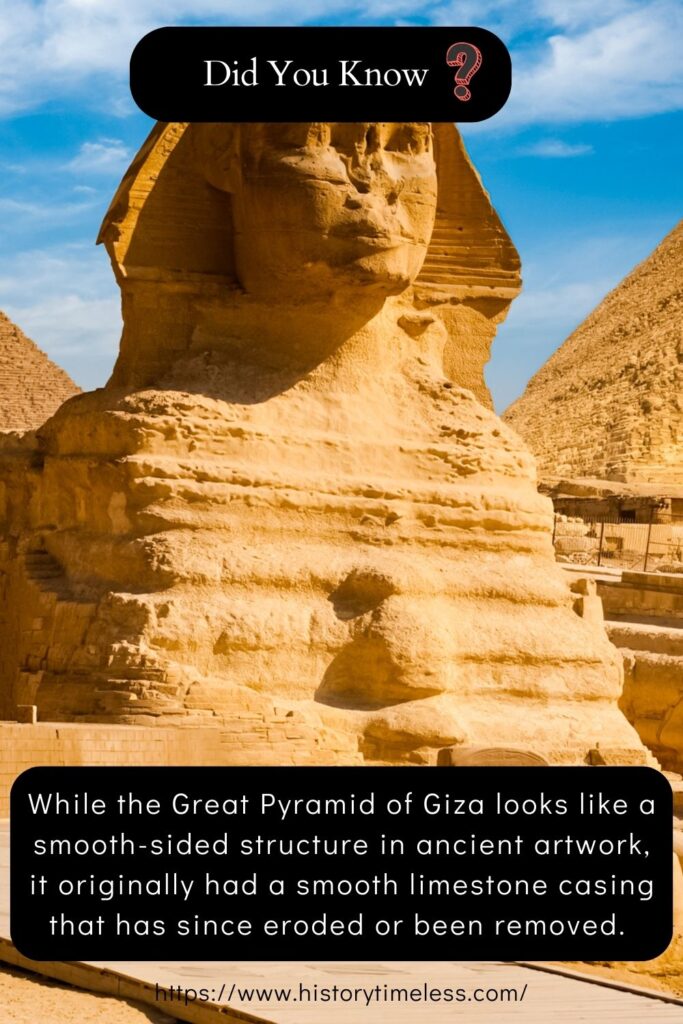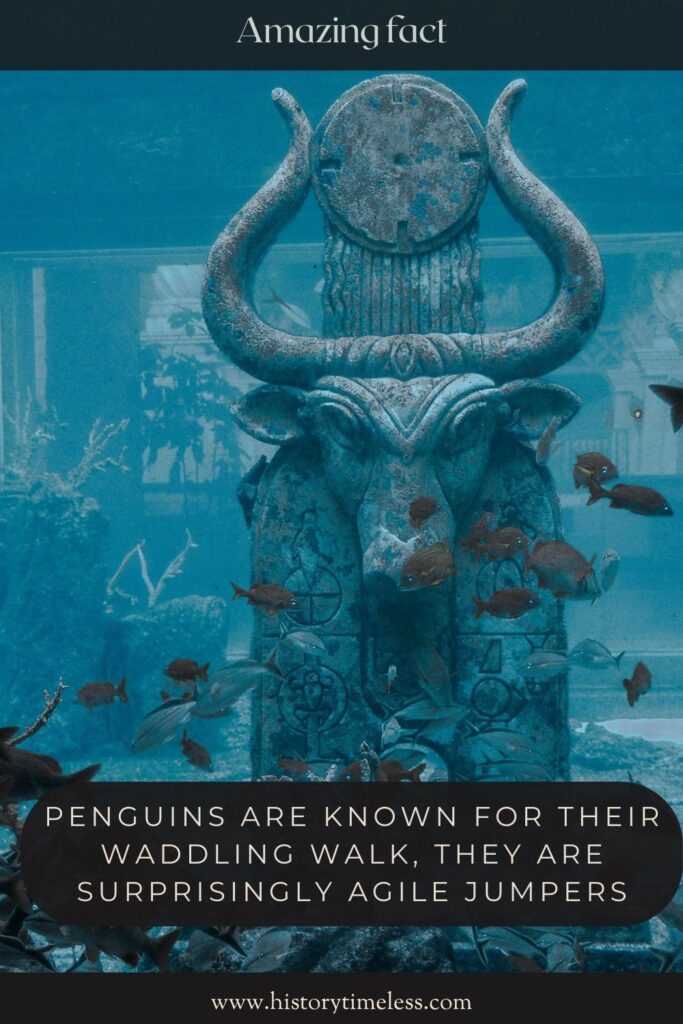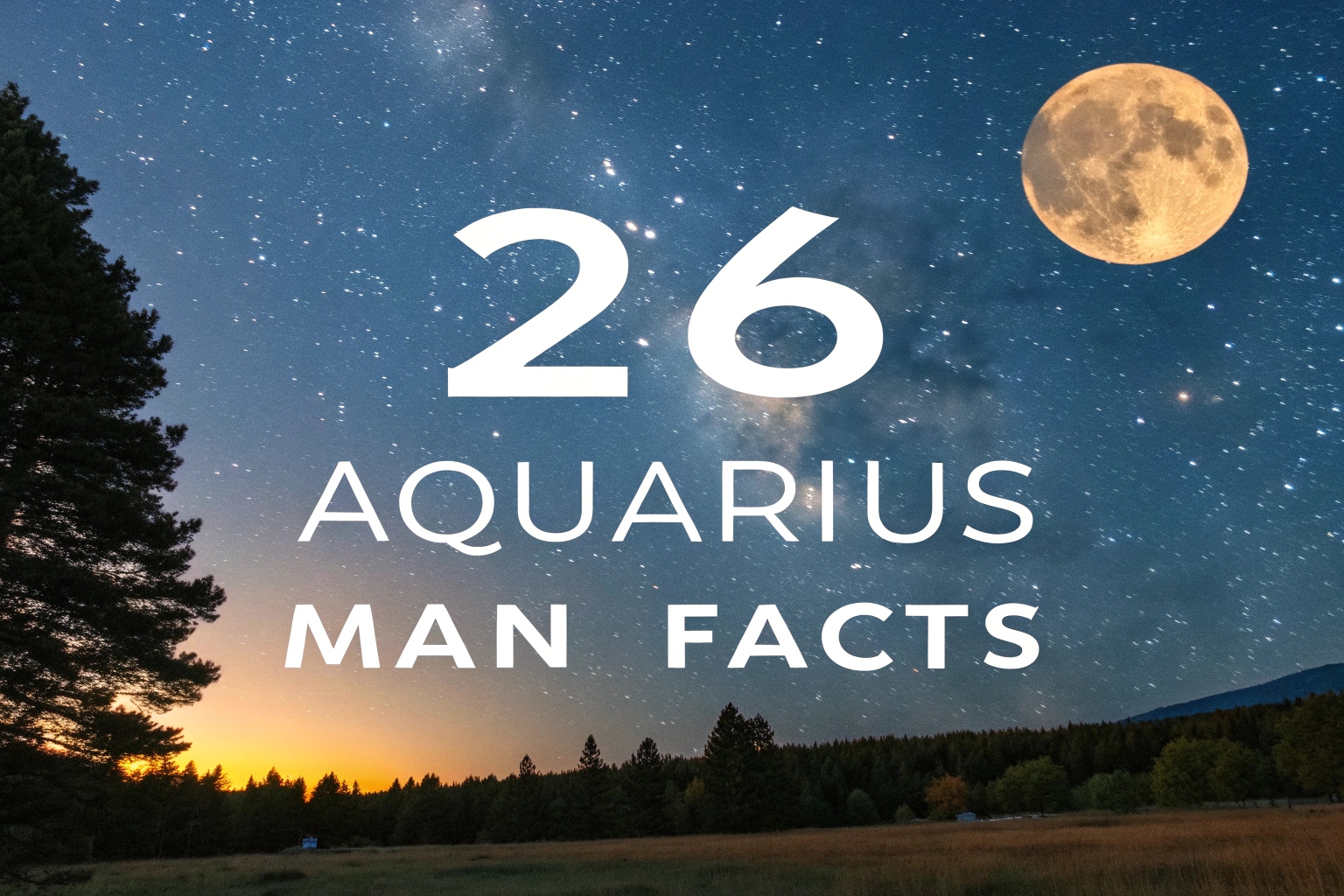Egypt, one of the world’s most fascinating countries, is known for its rich history, incredible architecture, and vibrant culture. While the Great Pyramids and the Nile River are widely recognized, there’s much more to Egypt than meets the eye.
From hidden tombs to modern-day traditions rooted in ancient customs, this country is full of surprises. Here are 26 intriguing facts about Egypt that you may not have heard before.
1. The Great Pyramid of Giza Can Still Change Shape
While the Great Pyramid of Giza looks like a smooth-sided structure in ancient artwork, it originally had a smooth limestone casing that has since eroded or been removed.

This means that if fully restored, the pyramid would look very different from the stepped stone structure we see today.
The missing outer casing was said to shine brightly in the sun, making the pyramid visible from great distances!
2. The Nile River Flows in an Unusual Direction
Unlike most rivers, which flow from north to south, the Nile flows from south to north. This unique feature played a crucial role in ancient Egypt, as it allowed easy transportation and irrigation for crops.
The annual flooding of the Nile also deposited nutrient-rich silt along its banks, making it the backbone of Egypt’s agriculture for thousands of years.
3. Ancient Egyptians Loved Board Games
Long before modern video games and card games, ancient Egyptians enjoyed board games like “Senet” and “Mehen.” Senet, one of the oldest known board games in history, dates back to around 3100 BCE.
It was played using dice-like sticks and had religious significance, representing the journey to the afterlife.
pharaohs, including Tutankhamun, were buried with their game boards, suggesting they planned to continue playing in the afterlife.
4. Egyptians Invented One of the Earliest Forms of Paper
Papyrus, the precursor to modern paper, was invented by the ancient Egyptians. Made from the papyrus plant, this material was used for writing documents, religious texts, and even personal letters.
The word “paper” itself comes from “papyrus.” Unlike modern paper, papyrus was incredibly durable, with some surviving scrolls dating back thousands of years!
5. Cleopatra Was Not Egyptian
Although she is one of Egypt’s most famous figures, Cleopatra was actually of Greek descent. She belonged to the Ptolemaic dynasty, a Greek royal family that ruled Egypt after Alexander the Great’s conquest.
Unlike many of her predecessors, Cleopatra embraced Egyptian culture, learned the language, and even styled herself as a reincarnation of the goddess Isis.
6. The Sphinx Was Originally Painted in Bright Colors
Today, the Great Sphinx of Giza appears as a weathered limestone structure, but when it was first built, it was painted in vibrant colors.
Traces of red, yellow, and blue pigments have been found on the statue, indicating that it once had a much more striking appearance. The erosion caused by wind and sand has stripped away most of the original paint over time.
7. Egyptians Had Their Own Version of the Toothbrush
Long before modern toothbrushes and toothpaste, ancient Egyptians used a form of oral hygiene made from twigs, herbs, and crushed eggshells.
They created an early version of toothpaste using a mix of myrrh, rock salt, and even ashes. Archaeologists have found evidence that some Egyptians suffered from dental issues due to their diet, but they were also pioneers in dental care practices.
8. Ancient Egyptians Had a Love for Cats
Cats were highly revered in ancient Egypt, often associated with the goddess Bastet, the deity of home, fertility, and protection. Egyptians kept cats as pets, believing they brought good luck and protected households from pests.
Killing a cat, even accidentally, was a serious crime, sometimes punishable by death. Some families even mummified their beloved cats so they could be together in the afterlife.
9. The World’s First Known Peace Treaty Was Signed in Egypt
The oldest recorded peace treaty in history was signed between the Egyptians and the Hittites around 1259 BCE. This treaty, known as the Egyptian-Hittite Peace Treaty, was created after the Battle of Kadesh and sought to end hostilities between the two powerful empires.
A copy of the treaty is even on display at the United Nations headquarters in New York, symbolizing the importance of diplomacy in human history.
10. The Ancient Egyptians Wore Makeup for More Than Just Beauty
Both men and women in ancient Egypt wore makeup, but not just for decorative purposes. They believed that eyeliner, particularly kohl, had protective qualities against the sun and infections.
Some studies suggest that the lead-based compounds in their cosmetics had antibacterial properties, which may have helped prevent eye infections. Additionally, the dark eyeliner was thought to provide spiritual protection from evil forces.
11. The Pyramids Were Not Built by Slaves
Contrary to popular belief, the pyramids were not built by slaves. Archaeological evidence suggests that the workers who built the pyramids were skilled laborers who lived in nearby workers’ villages.
They were well-fed, received medical care, and were even given honorable burials. Many of them took pride in their work, as inscriptions found in tombs suggest that they saw themselves as part of something monumental.
12. The Ancient Egyptians Had a 365-Day Calendar
Ancient Egyptians were among the first civilizations to develop a 365-day calendar, similar to what we use today. They divided the year into 12 months, each with 30 days, and added an extra five days at the end to celebrate religious festivals.
This calendar was created to track the annual flooding of the Nile, which was crucial for agriculture. It later influenced the calendars used by the Romans and, eventually, the modern Gregorian calendar.
13. The Lost City of Heracleion Was Found Underwater
The ancient city of Heracleion, once a bustling port city, was lost beneath the Mediterranean Sea for over 1,200 years before being rediscovered in 2000. This sunken city, near the present-day city of Alexandria, was an important trade hub in ancient Egypt.

Archaeologists have uncovered statues, temples, and even ships that had sunk with the city, giving us incredible insights into Egypt’s maritime history.
14. Ancient Egyptians Had Over 2,000 Gods and Goddesses
Egyptian mythology was incredibly rich, with over 2,000 deities governing different aspects of life. While gods like Ra (the sun god), Anubis (the god of mummification), and Osiris (the god of the afterlife) are well known.
There were also lesser-known gods for things like childbirth, beer, and even scorpions. Religion played a huge role in daily life, influencing everything from politics to architecture.
15. King Tut’s Tomb Had a Mysterious Curse
When British archaeologist Howard Carter discovered the tomb of Pharaoh Tutankhamun in 1922, rumors of a “mummy’s curse” quickly spread.
Some believed that those who entered the tomb would face misfortune or death. While many people involved in the discovery did die under mysterious circumstances, scientists believe this was due to bacteria or mold present in the sealed tomb rather than a supernatural curse.
16. Ancient Egyptians Loved Perfume and Deodorants
Personal hygiene was important in ancient Egypt, and they were among the first to create perfumes and deodorants. Egyptians made fragrances from essential oils, resins, and flowers, which were used for religious rituals and daily life.
Wealthy Egyptians would even wear wax cones on their heads that melted throughout the day, releasing a pleasant scent to combat the desert heat.
17. The Rosetta Stone Was the Key to Deciphering Hieroglyphs
For centuries, no one could understand ancient Egyptian hieroglyphs—until the discovery of the Rosetta Stone in 1799. This artifact contained the same inscription in three scripts: Greek, Demotic, and hieroglyphs.
Since scholars knew Greek, they were able to use the stone to finally unlock the meanings of hieroglyphic writing, providing us with an incredible window into ancient Egyptian history.
18. Egyptians Were Early Pioneers of Surgery
Ancient Egyptian medical texts, like the Edwin Smith Papyrus, show that Egyptian doctors were highly skilled in treating injuries and performing surgeries.
They developed techniques for setting broken bones, stitching wounds, and even performing brain surgery. Some skulls found in ancient tombs show evidence of healed surgical procedures, proving that their medical knowledge was advanced for its time.
19. Ancient Egyptian Art Followed Strict Rules
Egyptian art is instantly recognizable, with figures often shown in a rigid, sideways pose. This wasn’t due to a lack of skill but rather a strict artistic code that artists followed for thousands of years.
The goal was not realism but to depict people and gods in a way that emphasized their status and importance. This style remained largely unchanged for over 3,000 years!
20. The Desert Preserved Many Ancient Artifacts
Egypt’s dry desert climate has played a huge role in preserving its history. Unlike wetter regions, where organic materials decay quickly, the lack of moisture in Egypt has kept ancient structures, tombs, and even papyrus scrolls intact for thousands of years.
This unique environment is why we have such well-preserved mummies, temples, and writings from ancient times.
21. Egypt Is Home to One of the Oldest Dresses in the World
The Tarkhan Dress, discovered in an ancient Egyptian tomb, is considered one of the oldest woven garments ever found. Dating back over 5,000 years, this linen dress showcases the advanced textile craftsmanship of ancient Egyptians.
Its pleated design is surprisingly similar to modern fashion, proving that even in ancient times, Egyptians valued both practicality and style.
22. Pharaohs Were Sometimes Buried With Their Pets
Many Egyptian pharaohs and nobles were buried with their beloved pets, including dogs, cats, and even baboons. The ancient Egyptians believed in an afterlife where they could be reunited with their animals.
Some tombs have been found with mummified pets laid to rest beside their owners, proving that humans have had strong bonds with their pets for thousands of years.
23. The Ancient Egyptians Were Early Engineers of Dams
Long before modern dam construction, ancient Egyptians built sophisticated irrigation systems and small dams to control the annual flooding of the Nile.
These structures helped regulate water flow, prevent excessive flooding, and ensure crops had enough water during dry seasons. Their understanding of hydraulic engineering was incredibly advanced for their time.
24. Women Had More Rights in Ancient Egypt Than in Many Other Cultures
Unlike many ancient civilizations, Egyptian women had significant rights and freedoms. They could own property, run businesses, initiate divorce, and even hold powerful positions in government and religion.
Some women, like Queen Hatshepsut and Cleopatra, even ruled Egypt as pharaohs. This level of equality was rare in the ancient world and set Egypt apart from many other societies.
25. The Pyramid of Djoser Was the First Pyramid Ever Built
Before the famous pyramids of Giza, the Egyptians experimented with pyramid construction. The Pyramid of Djoser, built around 2630 BCE, was the first-ever pyramid.
Designed by the architect Imhotep, it marked a major leap in architecture and engineering. This step pyramid, located in Saqqara, paved the way for the grand pyramids that followed.
26. Egypt’s Capital, Cairo, Is Nicknamed “The City of a Thousand Minarets”
Cairo, Egypt’s bustling capital, is famous for its incredible Islamic architecture, earning it the nickname “The City of a Thousand Minarets.”
Home to centuries-old mosques, madrasas, and palaces, Cairo’s skyline is adorned with countless minarets that showcase the city’s deep historical and cultural significance. Walking through its streets is like stepping into a living museum of Islamic art and history.
Check out more incredible facts:
25 Super Cool Facts That Will Blow Your Mind!
26 Hilariously Accurate Facts About Eldest Daughters!
20+ Insane Facts About Animals That Defy Belief!
15+ Interesting World Facts: Say ‘Wow’ to These Discoveries!





